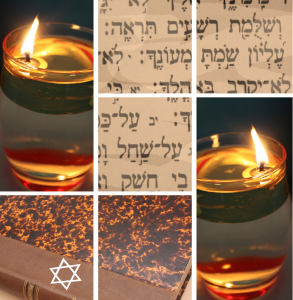I’m sure you’ll be happy to know that I strongly agree with you guys! Let’s try to understand what is the fundamental difference between the Hebrew alphabet and the ABC’s or any other alphabet of any language for that matter. This goes to the underlying difference between Hebrew, which is known as “lashon hakodesh”, meaning “the holy tongue”, and all other languages.
English, as all secular languages, is made up of letters and words decided upon by man. There’s nothing inherent about a table, for example, that would cause it to be called a table. It’s just a word made up many years ago by people in England (from the old English tabule which derives from the Latin tabula). They all agreed that a flat surface with four legs should be referred to as a table. In Germany they decided to call it a tisch and in Russia a stol. A group of kids in a class could decide one day to create a secret language and for them a gobbledygoop is a table, and walla, you have a language!
Not only are the words arbitrary and chosen by convention, the letters that make up the words are man-made as well. It has very early sources, going back to a form of writing developed in Egypt nearly 4000 years ago and further developed by Phoenicians about 700 years later. As early as its source may be, it was created by man.
Lashon hakodesh, the Hebrew letters and language, are fundamentally different. The Hebrew letters and words were God’s building blocks of creation. The 22 sacred letters of the Hebrew alphabet respresent profound, primal spiritual forces. They are, in effect, the raw material of creation. When G-d combined them into words, phrases and commands, they brought about creation, translating His will into reality.
There is a divine science in the Hebrew alphabet. The book “Sefer Yetzirah”, or “Book of Creation”, the early Kabbalistic work ascribed to the patriarch Abraham, describes how the sacred Hebrew letters were used as the agency of creation. The letters can be combined in countless combinations by changing their order and interchanging letters in line with the rules of various Kabbalistic letter systems. Each rearrangement of the same letters results in a new blend of the cosmic spiritual forces represented by the letters. An analogy of this can be found in the physical sciences. One combination of hydrogen and oxygen produces water, which another produces hydrogen peroxide. So it is with the infinite number of possible combinations of the atoms found in the periodic table of the elements.
So, too, in the spiritual arena there is a “spiritual periodic table of the elements”, made up of the 22 letters of the Hebrew alphabet. Not only the letters themselves, but the shape of each letter, the direction it faces, the order in which they appear in the Aleph-Beis and whether or not it has crowns or thorns upon it all have deep meanings and affect its power and what it can was and can be used to create. The analysis of each letter, it’s numerical value and its meaning is an entire study on its own right. Not only do the Hebrew letters posess creative powers, there are also lessons for life which the sages learn from the shape, order and direction each letter faces and appears in the Aleph-Beis. Just to take one example of many, the letter “gimel” faces the letter “dalet”. The word “gimel” has the same root as the work “gomel”, which means to give, bestow or donate.
The word “dalet” comes from the root “dal”, which means downtrodden or poor. The gimel faces the dalet to teach us we should always seek out those who are less fortunate than ourselves and bestow our tzedakah, our giving, upon them and find ways to help them.
The dalet, however, faces away from the gimel, to teach us then when we give tzedakah we should find a way to pass it to the receiver when he’s not looking; he shouldn’t know who it comes from so as not to be ashamed or embarrassed before the giver.
All this just goes to prove your side of the debate. The Aleph-Beis, the Hebrew alphabet, is anything but the ABC’s of the Jews! It is truly a divine gift, the very fiber of creation!
See also entry Hebrew Language I & II.
Sincerely,
Rabbi Yerachmiel Fried

